
Mastering The Basics: What Exactly Is A Quitclaim Deed?
A quitclaim deed is a legal document that permits a person to transfer his/her interest in a property to someone else. This is basically the most common type of deed used in the process of transferring real estate, especially if it is a case where ownership changes hands among family members or parties having previous relationships.
This kind of documentation does not give any guarantees concerning the title unlike the warranty deeds. Instead, it only conveys whatever interests are held by the grantor in land to the grantee.
It may also include some potential liabilities/encumbrances on the property; hence, one needs to really understand what such a decision means before filing quitclaim deeds for real estate transactions in New York.
TABLE OF CONTENTS
- Mastering The Basics: What Exactly Is A Quitclaim Deed?
- Exploring The Legal Implications Of A Quitclaim Deed In New York
- Demystifying The Legal Jargon: Key Terms Related To NY Quitclaim Deeds
- Understanding Quitclaim Deeds In New York: A Comprehensive Guide
- How To File A Quitclaim Deed In New York: Step-by-step Instructions
- Navigating The Tax Consequences Of A Quitclaim Deed In New York
- The Importance Of Consulting A Lawyer For Your Quitclaim Deed In New York
- Top Considerations Before Signing A Quitclaim Deed In New York
- Maximizing Benefits With A Well-drafted Quitclaim Deed In New York
- Comparing Quick Claim Vs Warranty Deeds: Which Is Right For You?
- Unlocking Hidden Gems: Others Also Viewed On Linkedin About NY Quitclaim Deeds
- From A To Z: Product Details You Need To Know Before Filing A NY Quitclaim Deed
- Practice Areas That Often Involve Using Or Receiving NY Quitclaim Deeds
- Tips For Completing Your Own DIY NY Quitclaim Deed Successfully
- Are There Any Exceptions When Filing NY Quitclaim Deeds?
- How To Ensure Your NY Quitclaim Deed Is Valid And Enforceable
- The Pros And Cons Of Using NY Quitclaim Deeds For Real Estate Transactions
- Beyond Real Estate: Other Situations Where You May Need To Use A NY Quitclaim Deed
- How Do I File A Quitclaim Deed In New York?
- How Much Does It Cost To File A Quitclaim Deed In New York?
- How Do I Transfer Ownership Of A Property In NY?
- In Which Of The Following Situations Could A Quitclaim Deed Not Be Used?
Exploring The Legal Implications Of A Quitclaim Deed In New York
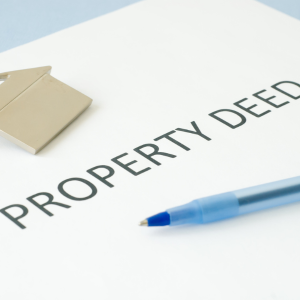
A Quitclaim Deed is a legal document used in real estate transactions to transfer ownership of property from one party to another. In New York, this procedure must be followed correctly to avoid any potential legal ramifications.
Both the grantor and grantee must understand the deed’s terms and conditions, including their respective rights and responsibilities. This includes ensuring that all necessary information is accurately included in the deed, such as both parties’ names and addresses, a detailed description of the property, and any applicable legal descriptions or restrictions.
Failure to properly file a Quitclaim Deed in New York may result in disputes or complications down the road, so it is critical to follow all legal rules and procedures.
Demystifying The Legal Jargon: Key Terms Related To NY Quitclaim Deeds
In New York real estate transactions, it is essential to comprehend the legalese surrounding quitclaim deeds. Although these terms can be intimidating at first, they can be easily understood with the right information and guidance.
One such term is “grantor,” which designates the individual or organization that transfers ownership of real estate through a quitclaim deed. The recipient of the transferred interest, or “grantee,” is another crucial term.
Understanding the meaning of “consideration,” which denotes any value supplied in return for the transfer of property ownership, is also crucial. Furthermore, understanding the distinction between “tenants in common” and “joint tenants” can influence how a quitclaim deed will divide property ownership among several parties.
Through the explanation of these important terminologies associated with New York quitclaim deeds, people will be able to handle and file this legal document for real estate transactions with assurance.
Understanding Quitclaim Deeds In New York: A Comprehensive Guide
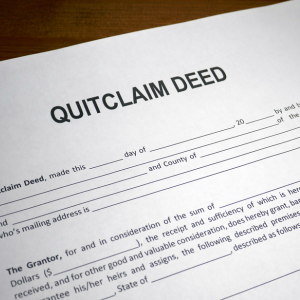
A quitclaim deed is a legal document used in real estate transactions to transfer ownership of property from one party to another. This process can be complicated in New York and necessitates meticulous attention to detail.
Anyone looking to properly file a quitclaim deed in New York must first understand the intricacies of the process. This comprehensive guide will walk you through the process and provide valuable insights into how to ensure a smooth and successful transaction.
This article provides comprehensive information on quitclaim deeds, including their purpose and New York-specific requirements, to help you master the process. Whether you are buying or selling property in New York, a solid understanding of quitclaim deeds is critical for a smooth real estate transaction.
How To File A Quitclaim Deed In New York: Step-by-step Instructions
If you want to transfer real estate ownership in New York, you must first file a quitclaim deed. The current owner can transfer their interest in the property to another party through this legal document.
In order to properly file a quitclaim deed in New York, several steps must be completed. First, you must obtain the necessary forms from your county clerk’s office or an online legal document service.
Next, you must accurately complete the forms with all required information, including a description of the property and the names of both parties. After completion, the deed must be signed and notarized before being recorded at the county clerk’s office.
Make sure all fees and taxes are paid at this time. Finally, after recording, copies of the quitclaim deed should be given to both parties for their records.
You can file a quitclaim deed for your real estate transaction in New York by following these step-by-step instructions.
Navigating The Tax Consequences Of A Quitclaim Deed In New York
When filing a quitclaim deed in New York for real estate transactions, consider the potential tax consequences. While this type of deed rarely involves the transfer of money, it does have tax implications.
If the transferred property is valuable, the grantor may face gift taxes. Furthermore, the grantee will be liable for any property taxes associated with the transferred property.
It is critical to carefully navigate these tax implications and consult with a tax professional to ensure proper compliance and avoid future legal issues.
The Importance Of Consulting A Lawyer For Your Quitclaim Deed In New York
Filing a quitclaim deed in New York for real estate transactions can be a difficult and perplexing task. Consult a lawyer before proceeding.
A quitclaim deed transfers ownership of a property but does not guarantee a clear title. This means that if the deed is not properly filed, it may cause problems or complications.
An experienced lawyer can offer valuable advice and ensure that all necessary steps are taken to safeguard your interests and avoid future disputes or legal challenges. Furthermore, they can review the deed to ensure that all necessary information is included and that the transaction’s terms are accurately reflected.
Consulting a lawyer for your quitclaim deed in New York is a critical step toward a smooth and successful real estate transaction.
Top Considerations Before Signing A Quitclaim Deed In New York
![how to fill out quitclaim deed in market_city]](https://image-cdn.carrot.com/uploads/sites/36835/2024/06/how-to-fill-out-quitclaim-deed.png)
When filing a quitclaim deed in New York for real estate transactions, several important factors should be considered. First and foremost, it is critical to fully comprehend the legal implications of signing a quitclaim deed.
This type of deed transfers ownership rights from one party to another, but it does not ensure that the property is free of liens or encumbrances. Before signing a deed, consult with a knowledgeable attorney and conduct a thorough title search.
Furthermore, the parties involved should carefully read and comprehend the terms of the deed, including any potential tax implications. It is also recommended that the deed be notarized and properly recorded with the county clerk’s office to ensure its validity.
Taking these factors into account will help to ensure a smooth and legal process when filing a quitclaim deed in New York for real estate transactions.
Maximizing Benefits With A Well-drafted Quitclaim Deed In New York
Properly filing a quitclaim deed is essential for both parties in real estate transactions in New York. A well-drafted quitclaim deed can increase the benefits for both the grantor and the grantee.
A well-drafted quitclaim deed protects all parties by clearly outlining the transfer of ownership, as well as any conditions or restrictions. A comprehensive quitclaim deed can also help to avoid future legal disputes.
When drafting a quitclaim deed, it is critical to seek legal advice to ensure that all relevant information is included and that both parties’ intentions are accurately reflected. Individuals can maximize the benefits of their New York real estate transactions by carefully crafting a quitclaim deed.
Comparing Quick Claim Vs Warranty Deeds: Which Is Right For You?
Proper filing of a quitclaim deed is required for real estate transactions in New York state. However, you may also be given the option of using a warranty deed.
Which option is best for you? There are some significant differences between the two that can help you make an informed decision. A quitclaim deed effectively transfers to the grantee any claim or interest that the grantor may have in the property.
As a result, there is no guarantee of clear title, and the grantor will not resolve any property issues. In contrast, a warranty deed assures the grantor that they have clear title to the property and will defend it against any future claims.
It all comes down to your individual circumstances and whether you prefer greater security in your real estate transaction or are comfortable with potential risks.
Unlocking Hidden Gems: Others Also Viewed On Linkedin About NY Quitclaim Deeds
Knowing how to file a quitclaim deed is essential knowledge for anyone dealing with real estate transactions in New York. This legal document allows for the transfer of ownership from one party to another without any warranties or guarantees.
Complete the required forms, have them notarized, and then record the deed with the county clerk’s office to properly file a quitclaim deed in New York. But for individuals unfamiliar with it, mastering this process can frequently be a daunting and perplexing task.
This is why it’s wise to consult seasoned experts or make use of social media to find people who have looked into NY quitclaim deeds before. One way to improve one’s understanding of this vital part of New York real estate transactions is to unearth these nuggets of information and share them with others.
From A To Z: Product Details You Need To Know Before Filing A NY Quitclaim Deed
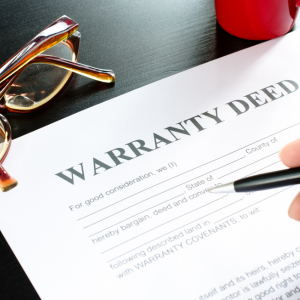
In New York real estate transactions, understanding quitclaim deed filing is crucial. This legal document permits owners to transfer ownership without guarantees or warranties.
Several details must be considered before starting this process. First, understand the property being transferred and its ownership status.
Also, make sure all parties agree to sign the quitclaim deed. You should also consult an experienced attorney to ensure all paperwork and legal requirements are met.
Before filing the quitclaim deed, clear all mortgages and liens on the property. Following these steps and understanding the process will help you file a New York quitclaim deed for your real estate transaction.
Practice Areas That Often Involve Using Or Receiving Ny Quitclaim Deeds
Real estate transactions can be complicated and require numerous legal documents, including quitclaim deeds. These types of deeds are commonly used in New York in a variety of practice areas, including divorce, estate planning, and interfamily property transfers.
They are also commonly used by real estate lawyers when dealing with commercial or residential sales or purchases. Quiet claim deeds may also be required in cases where there are property disputes or boundary line adjustments.
To ensure a smooth and legally sound transaction, anyone involved in these practice areas must understand how to properly file a quitclaim deed in New York.
Tips For Completing Your Own DIY NY Quitclaim Deed Successfully
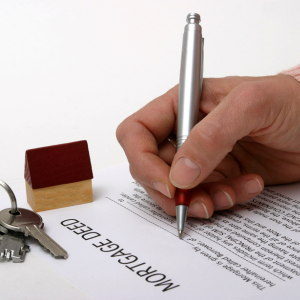
Quitclaim deeds are important for New York real estate transactions. No guarantees or warranties are provided when this legal document transfers property ownership.
Although a lawyer or title company is recommended, some people complete the quitclaim deed themselves. If you plan to do so, keep these tips in mind for success.
First, learn about New York quitclaim deed requirements and procedures. Gather all necessary documents, including the property description and party names, beforehand.
The deed must be accurately completed and notarized before being submitted to the county clerk for recording. Lastly, verify that the deed was recorded correctly.
DIY NY quit claim deeds can be completed with preparation and attention to detail.
Are There Any Exceptions When Filing NY Quitclaim Deeds?
Certain exceptions apply when filing a quitclaim deed in New York for real estate transactions. While the procedure appears to be straightforward, there are some exceptions.
For example, if the property being transferred has any existing liens or mortgages, the grantor must obtain the lienholder’s written consent before filing the quitclaim deed. If the property is owned jointly, all parties involved must sign and file the quitclaim deed.
Furthermore, if a married couple wishes to transfer property between themselves, they must follow specific guidelines established by New York state law. When filing a quitclaim deed in New York, it is critical to be aware of these exceptions and take all necessary steps to ensure a smooth and successful transaction.
How To Ensure Your NY Quitclaim Deed Is Valid And Enforceable
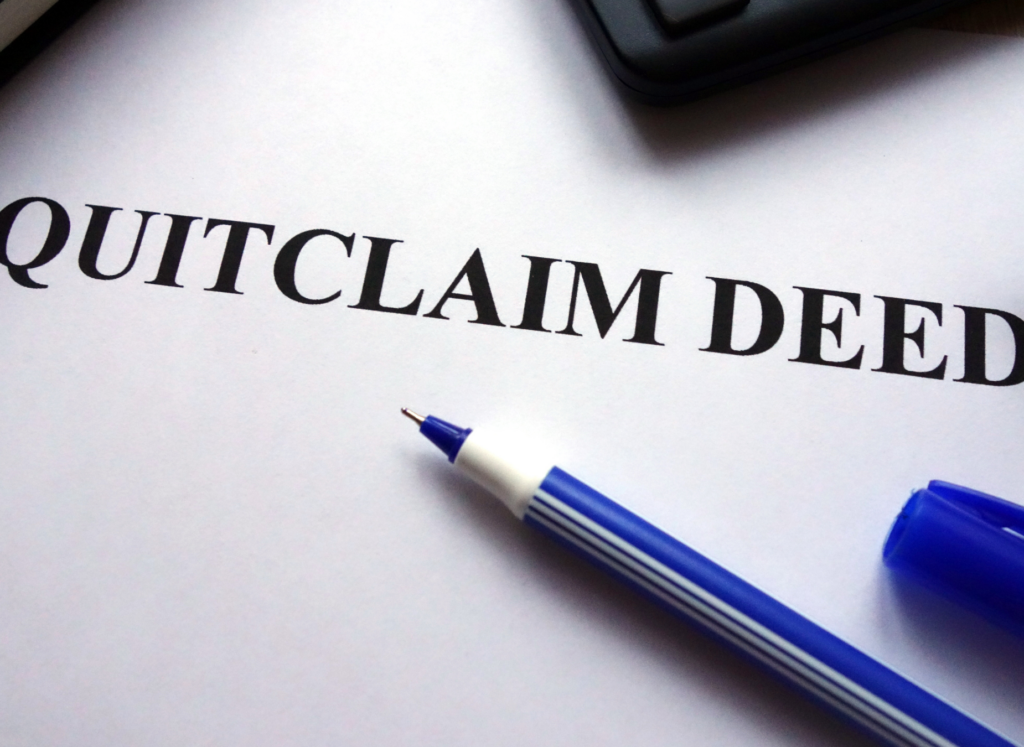
Filing a quitclaim deed in New York for real estate transactions necessitates meticulous attention to detail in order to ensure validity and enforceability. To begin, thoroughly review the deed and ensure that all pertinent information is correct and complete.
This includes the names of the grantor and grantee, a legal description of the property, and any applicable terms or conditions. Having the deed notarized by a licensed notary public validates its authenticity.
Furthermore, conducting a title search can help identify any potential issues with the property that could jeopardize the deed’s validity. Finally, after completing all of the necessary steps, filing the quitclaim deed with the appropriate county office will ensure that it is legally recognized.
Following these steps carefully will ensure that your quitclaim deed in New York is valid and enforceable for your real estate transaction.
The Pros And Cons Of Using NY Quitclaim Deeds For Real Estate Transactions
When it comes to real estate transactions in New York, a quitclaim deed is one way to transfer property ownership. This type of deed transfers a property owner’s interest to another person without guaranteeing the title’s validity or quality.
One significant advantage of using a quitclaim deed is that it can be a relatively quick and simple process, eliminating the need for extensive paperwork and legal fees. However, there are some possible drawbacks to consider.
One major disadvantage is that quitclaim deeds do not provide any warranties or protections to the buyer, which means they may not have full legal ownership of the property if title issues arise. Furthermore, using a quitclaim deed may not be appropriate for all types of real estate transactions, such as those involving financing or multiple owners with competing interests in the property.
Before deciding whether a quitclaim deed is the best option for your New York real estate transaction, you should carefully weigh the advantages and disadvantages.
Beyond Real Estate: Other Situations Where You May Need To Use A NY Quitclaim Deed
A quiet claim deed may be required in situations other than real estate transactions in New York. One example is when family members transfer property, such as a parent passing on their home to their child.
Another situation is when a spouse’s name is added or removed from a property title during a divorce. When gifting or donating property, a quitclaim deed can also be used to transfer ownership.
It can also be used to clarify ownership rights in cases where there is confusion or dispute over property boundaries. In all of these cases, properly filing a quitclaim deed is essential to ensuring the legal transfer of property ownership.
How Do I File A Quitclaim Deed In New York?
Although it may seem difficult, filing a quitclaim deed in New York can be a simple and quick process with the correct assistance. Obtaining all required documentation, such as the original deed and any pertinent transfer tax forms, is the first step.
Next, you need to correctly fill out the quitclaim deed form, making sure to include all necessary details like the names of the parties and the property’s legal description. The form needs to be filled out, signed by both parties, notarized, and submitted to the relevant county clerk’s office.
Making sure that the deed is recorded within 30 days of its execution and that all fees are paid is very important. By following these procedures, you can make sure that your quitclaim deed for your real estate transaction is filed in New York correctly.
How Much Does It Cost To File A Quitclaim Deed In New York?
Filing a quitclaim deed in New York is a crucial step in real estate transactions, but many people are unaware of the associated costs. The filing fees for a quitclaim deed in New York vary by county.
The base fee typically starts at $45, with an additional $5 charge for each page after the first two. However, other factors such as transfer taxes and recording fees may apply, affecting the total cost significantly.
To avoid unexpected expenses, it is critical to research and understand these fees prior to filing a quitclaim deed. Seeking professional assistance from a real estate attorney or title company can also help you navigate the complex process and ensure that all fees are calculated and paid correctly.
How Do I Transfer Ownership Of A Property In NY?
Properly filing a quitclaim deed is one of the most important steps in transferring property ownership in New York.
This legal document permits the transfer of ownership without warranties or guarantees, making it an excellent choice for family transfers or ownership changes between trusted parties.
However, in order to ensure the validity of a quitclaim deed and avoid potential legal issues, the proper procedure must be followed when filing it.
Mastering the process of filing a quitclaim deed in New York, from obtaining the necessary forms to correctly completing them and submitting them to the appropriate government office, is critical for a smooth and successful real estate transaction.
In Which Of The Following Situations Could A Quitclaim Deed Not Be Used?
When it comes to real estate transactions in New York, knowing how to properly file a quitclaim deed is essential. This legal document is commonly used for transferring property ownership between family members or in divorce settlements, as it does not require any guarantees or warranties.
However, there are some situations in which a quitclaim deed is inappropriate. A quitclaim deed, for example, cannot be used if there are multiple owners of the property and only one wishes to transfer ownership.
Furthermore, if the property has outstanding liens or mortgages, a quitclaim deed cannot be used to remove them. To determine whether a quitclaim deed is appropriate for your situation, you should consult with a real estate attorney.
These findings apply throughout New York State, including in cities such as New York, Buffalo, Rochester, Yonkers, Syracuse, Albany, and nearby areas. For more assistance, please call us at (631) 336-9166 or visit our website.
More Resources For Sellers In New York
| QUITCLAIMS | QUIT-CLAIM DEED | OWNERSHIP INTEREST | COVENANTS | SURVIVORSHIP | CO-OWNERSHIP |
| RIGHT OF SURVIVORSHIP | JOINT TENANCY | TENANCY BY THE ENTIRETY | TENANTS BY THE ENTIRETY | SURCHARGE | REAL ESTATE LAWS |
| BARGAIN-AND-SALE DEED | TENANCY | PREMIUM | INSURANCE | INSURANCE COMPANY | INSURER |
| WARRANTY OF TITLE | GENERAL WARRANTY DEED | REAL PROPERTY | TITLE INSURANCE | PRIVACY POLICY | |
| PRIVACY | LAW FIRM | COOKIE | BENEFICIARY | THE UNITED STATES | TAX RETURN |
| SIGNATURE | PROBATE | PAYMENT | LLC | LEGAL ADVICE | JERSEY |
| COURT ORDER | BROOKLYN | BROOKLYN, NEW YORK | AMBIGUITY | THE COUNTY CLERKS | REAL PROPERTY TRANSFER |
| PROPERTY TRANSFER REPORT | A REAL PROPERTY TRANSFER | THE COUNTY CLERKS OFFICE | REAL PROPERTY TRANSFER REPORT |

